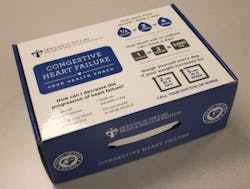Overnight, the COVID-19 global pandemic caused significant disruption to all aspects of life worldwide, and just as quickly, innovation became our bridge over troubled waters, as it has throughout history.
Everyone remembers the Apollo 13 crisis. When there was an explosion on the lunar module, NASA engineers had to figure out how to build a filter out of a bunch of spare parts on the spacecraft. They only had a few hours to find a solution. It was a great moment for the U.S. space program and for American ingenuity. Out of a crisis came a solution.
In 1952, the U.S. was experiencing the worst polio outbreak in its history, and with no vaccine available 57,000 people became infected, 21,000 were paralyzed and 3,145 died, most of them children. Swimming pools and movie theaters were closed up, and frightened parents kept their children at home after seeing images of kids in leg braces and hospital wards filled with infants sealed in iron lungs. With the help of a national March of Dimes fundraiser campaign, a vaccination was discovered and introduced on April 12, 1955.
Family practice physician Dr. Sarah Page says, “The COVID-19 pandemic will bring exciting new innovations just as it has in the past. Caregivers throughout history have been able to adapt and rise to the occasion with new innovations when challenged with crises.”
Where We are Today
Today, medical professionals across the U.S. and beyond are developing innovative solutions to problems that arose out of the pandemic. Immediately, with the shortage of PPE, nurses and others began making face masks and face shields, distilleries began making hand sanitizers, and physicians began developing new products and procedures to respond. Our subsidiary Tech Knowledge Associates and our Innovation Lab were among those diligently working to make quality masks, especially for the frontline.
COVID-19 has triggered unprecedented innovation including here at The Innovation Institute where the need to accelerate new solutions and medical products in our Innovation Lab became a priority. One of those products was the BayWin Closed Circuit Valve™, which has been dispersed to hospitals across the U.S., and is designed to maximize protection of caregivers from airborne infectious agents that can be released from mechanically ventilated patients. Unlike the other valves on the market, the BayWin valve doesn’t require caregivers to disconnect the valve to change from manual to mechanical ventilation or to do suction or provide meds. Disconnecting the ventilator circuit can expose clinical staff to infectious agents released from within the circuit and create loss of lung pressure in patients, that may lead to complications like ventilator-associated pneumonia.
Dr. David Erickson, chief medical and innovation officer for Avera, one of the health systems that took delivery of the valves, said, “This new device addresses challenges we face while treating patients with COVID-19. Now, especially during this critical time, we can help minimize disconnections of ventilator circuits.”
Another protective innovation from one of our health system member owner physicians is a hands-free door handle you can open with your forearm. A 3-D prototype was printed in our Lab. Several of these have been distributed and are being tested before large scale production.
Invenio, one of our portfolio companies, is focused on precision medicine and is working on a test to determine which medicines a patient will best respond to. They are currently working to determine how this might apply to COVID meds. Invenio is also offering antibody testing to the public.
Telehealth and virtual visits have become much more common as numbers increased by 4,000 percent in just the first few months of the pandemic (source: FAIR Health). Now, innovators are busy trying to maximize its capabilities, and not just in remote areas. Health Systems across the US are using telehealth as a means to protect caregivers and treat patients during the lockdown when hospitals have been focused on COVID-19 and discontinued elective procedures and attempted to limit direct contact to only the most critical. Avera eCARE CEO Deanna Larson says, “Virtual access fills a critical gap, providing on-the-spot access to health care services while connecting people to local resources.”
According to a McKinsey & Company, the COVID-19 pandemic propelled patients and physicians to quickly adopt telehealth, and surveys indicate that 76 percent of respondents indicated that they were highly or moderately likely to use telehealth going forward. However, as we know, any improvement and change requires careful innovation and integration of technology to improve convenience and access to care, better patient outcomes, and a more efficient health care system.
While COVID has taken a toll on society with the loss of life, it has also caused havoc for those with other ailments including mental health diseases, heart disease, diabetes and even Alzheimer’s. The lack of access to care, lockdown, and shortage of resources increases the risk to these patients and compounds the medical conditions. The pandemic has exposed some of the weaknesses in our health care delivery model. It has also triggered the need for more urgent innovation to address care delivery. We have seen a dramatic increase in digital innovations to help patients, providing access to information and caregivers.
Providence Digital Innovation Group has created a Covid-19 Digital Insight Report Series that includes gathered knowledge, insight, and informed opinions to help share best practices and innovations that are intended to help all of us as we move into the next normal. Findings conclude that “Post-COVID, the speed required to move beyond simple enablement of old business models online will challenge industry incumbents like health systems and health plans as disruptors take advantage of a massive amount of patients experiencing the ease and convenience of digital care for the first time. Health systems need to rapidly adopt technology, create better patient experiences, and evolve their business models or risk seeing a disruption even larger than the one COVID-19 catalyzed. Simply putting the old model online will not be enough.”
Dr. Stephanie Mills, inHealth Strategies President says, “The work the Innovation Institute is doing across its member owner organizations and internal companies is extremely valuable in supporting the needs of both health care providers and patients during these challenging times of the pandemic. By leveraging our experience linking technology and innovative processes, we can help extend the reach of our health care partners as we work together on new ways to deliver primary care services, help individuals manage chronic illnesses, and support wellbeing and prevention. She added, “While we offer population health services, our new partner FutureSense offers compensation and rewards, change management, and human resources operations solutions. Together, we are helping to ensure the health and safety of our workplaces and communities, while we explore initiatives for our clients’ greater good.”
Chronic illnesses are at the forefront now as COVID-19 seeks out those with compromised immune systems. Innovators like Dr. Kenneth Civello from our member owner Franciscan Missionaries of Our Lady Health System in Louisiana, understand the need to equip patients with the tools they need to manage chronic diseases. Therefore, Dr. Civello developed and introduced the HealthBox, a friendly take home “health coach” for patients with congestive heart failure. Civello explains that the HealthBox serves as a confidence builder for patients by providing them with the knowledge and tools to manage their disease, thus helping to improve outcomes by reducing stress, readmissions, and the progression of heart failure.
The environment we are in is allowing us to establish creative and innovative ways to safely move studies forward expeditiously. This pandemic is unprecedented and it’s an opportunity for us to make the world a better place. Our world will never be the same. It will be better! Health care in the U.S. will improve as a result of the pandemic. We will find ways to expedite new medical breakthroughs, telemedicine and virtual visits will become more commonly accepted, digital solutions will continue to evolve, and care will be delivered in a less hospital centric model. The supply chain model for medical supplies, medicine and products will be less dependent on China. There will be new genetic discoveries and medicine will continue to advance exponentially. We will soon have vaccines for COVID 19 that will save lives and prevent further exposure. We will survive this and will come out stronger because of it!
Joe Randolph is the president and CEO of The Innovation Institute




